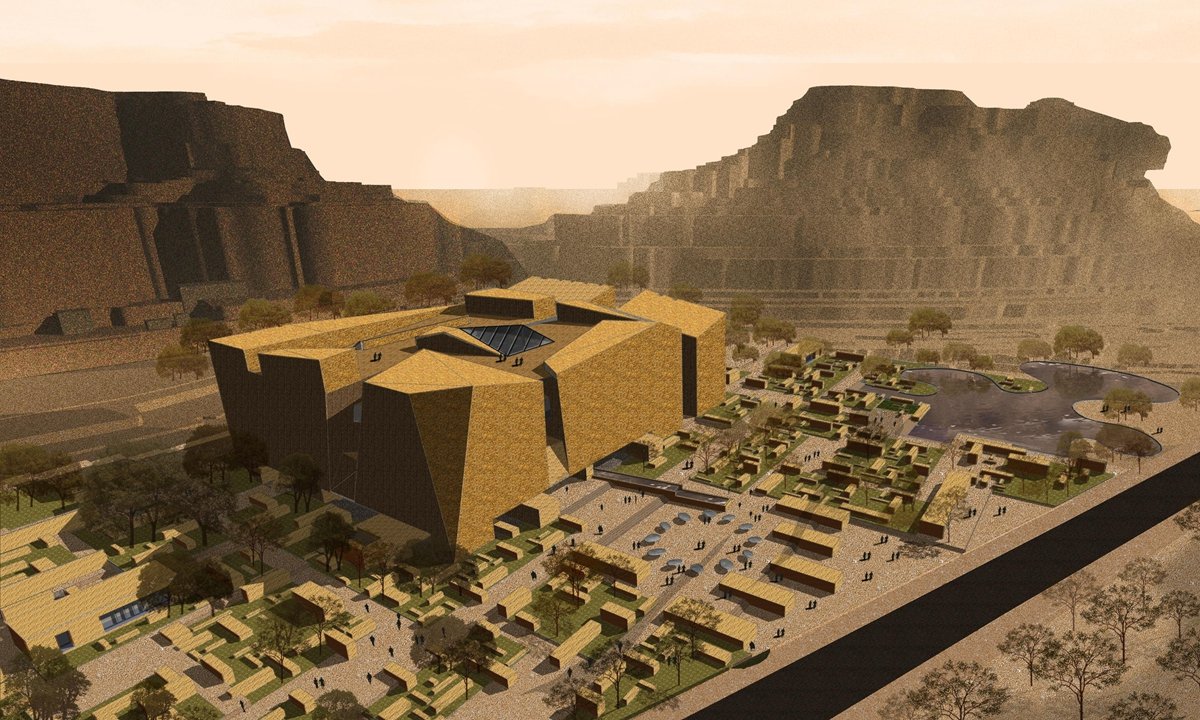Liu Kecheng, a 60-year-old architect born in Northwest China’s Xinjiang Uygur Autonomous Region, has made Xi’an, Shaanxi Province, his second home for over 40 years. This region, rich in historical and archaeological resources, is often described by locals using the classic Chinese saying “Above ground, Xi’an; under the ground, Chang’an”. With a keen eye for architecture, Liu has successfully integrated the city’s urbanization with its vast architectural heritage.
Over the years, Liu has dedicated himself to “architecture for cultural heritage,” bridging the gap between the past and the present by designing museums for the preservation of ancient ruins across China, many of which are located in Shaanxi Province.
One of Liu’s most notable projects is the design of a museum for the Shimao ruins in Yulin, Shaanxi Province. This site, built 4,000 years ago, was once a massive stone city and is now a significant archaeological research site in China’s national efforts to trace the origins of its civilization. The museum is set to open to the public by the end of 2023.
The Shimao site, located between two remnants of the Great Wall and near the historically significant town of Gaojiapu, posed a unique challenge due to its geographically important location. A safe distance had to be maintained between the new museum and the historical site to protect the archaeological landmark. Despite these limitations, Liu managed to design a facility that resonates with the essence of the ancient ruins. He used concrete to create faux-stone exterior installations of varying sizes and shapes, achieving a “primitive” aesthetic while addressing safety concerns.
Liu believes that new constructions should always be a part of their original environment and context, a principle he applies to all his projects. For instance, the Hanyangling Museum in Shaanxi Province, another of Liu’s signature projects, features an underground exhibition space. This design not only provides optimal conditions for artifact preservation but also pays homage to the history of the site with its understated exterior.
Liu’s upcoming projects aim to address the challenges posed by the rapid urbanization that threatens the historical beauty of metropolitan cities. One such project is the design of the Nanjing Imperial Examination Museum of China, located in one of the busiest commercial streets in Nanjing, Jiangsu Province. This complex project required Liu to create a serene space amidst the hustle and bustle of the city. He designed a 150-meter ramp that leads visitors 21 floors underground, allowing them to filter out distractions and prepare for a quiet experience.
Liu’s architectural philosophy centers on the belief that every venue has a soul and everything has spirits. In addition to his work in cultural heritage preservation, Liu has also ventured into “industrial legacy design” with a focus on sustainability. His decades-long experience and innovative approach to design make him a leading figure in the field of architecture for cultural heritage preservation.
READ MORE:
